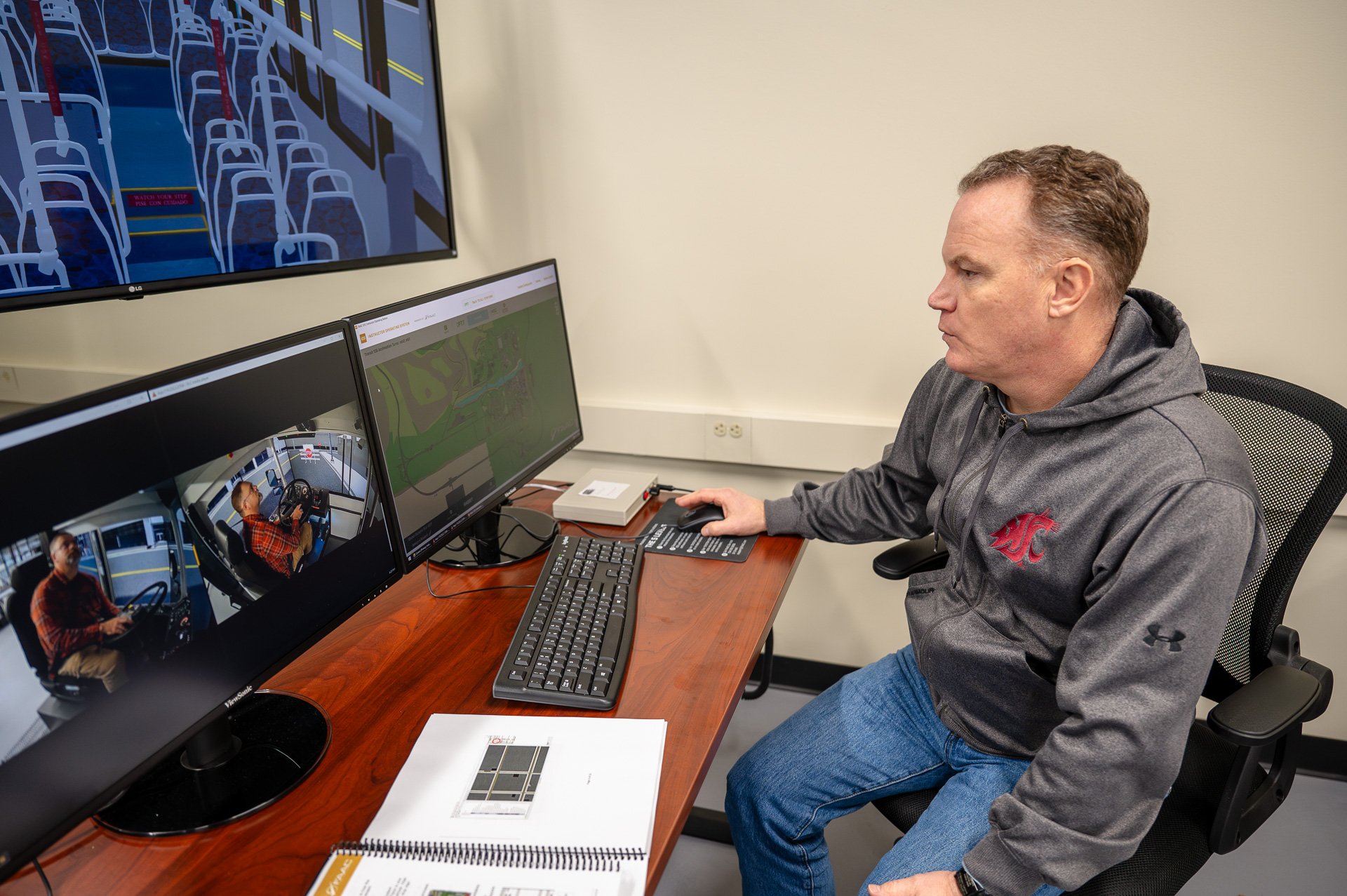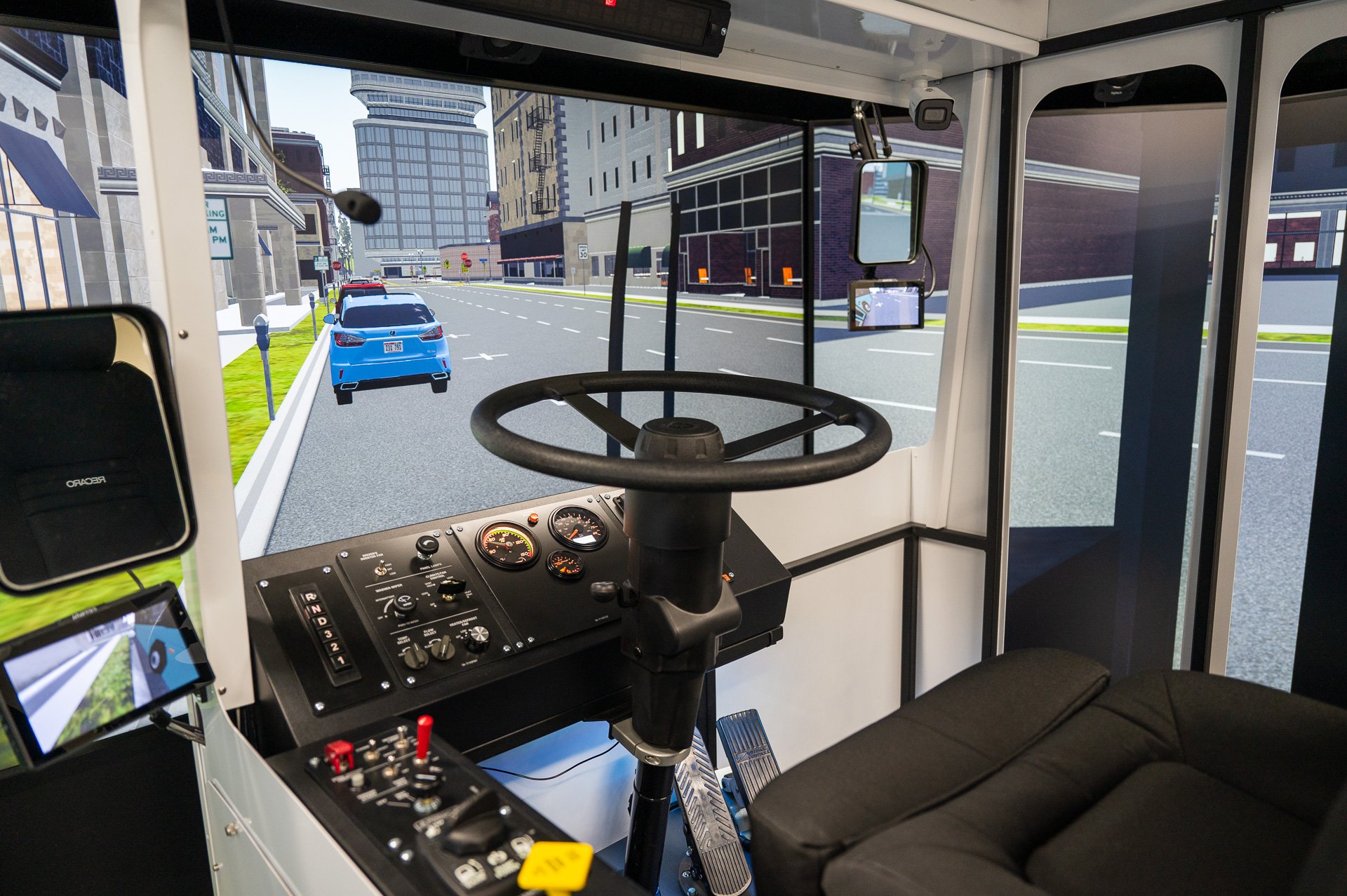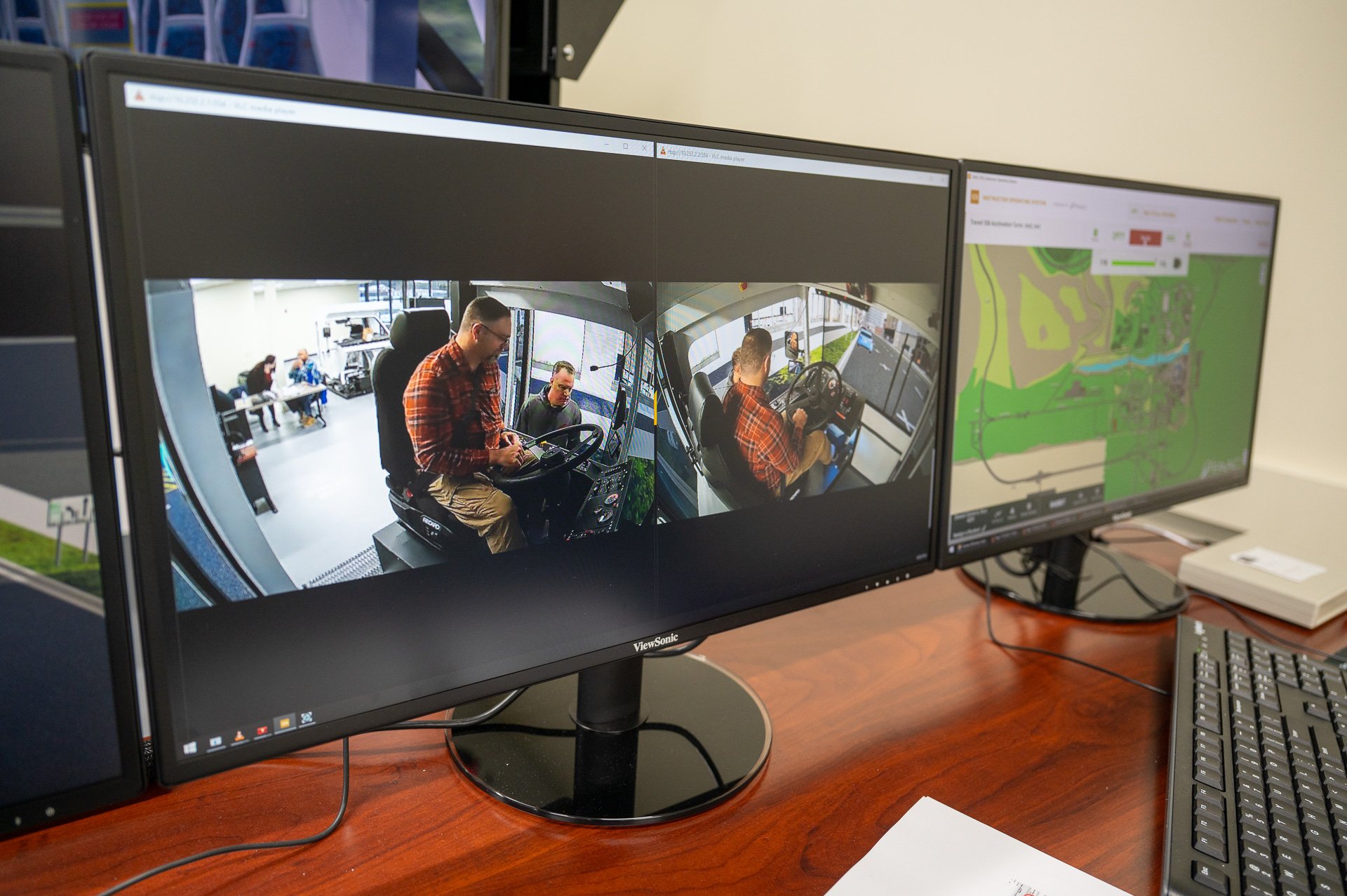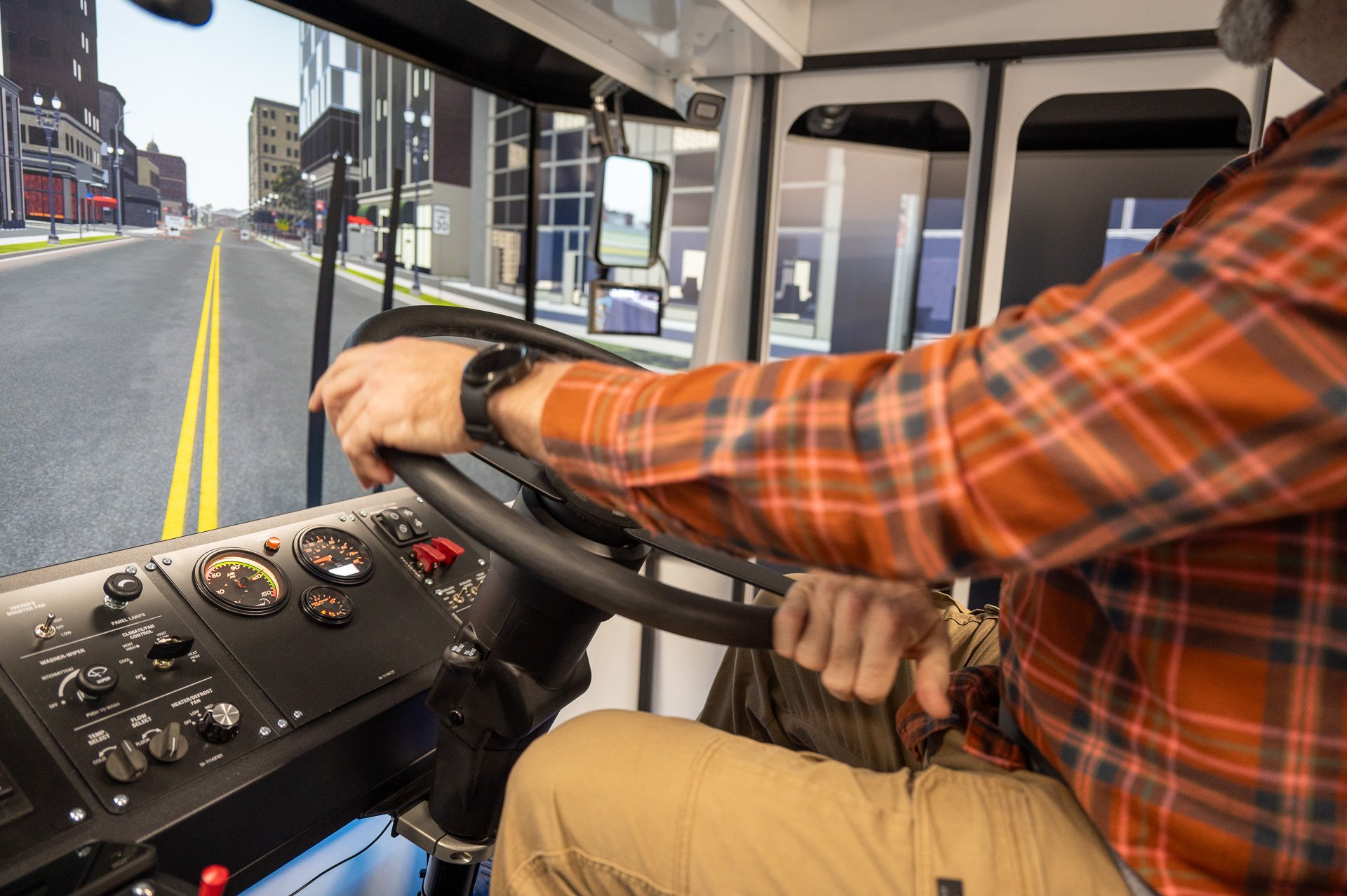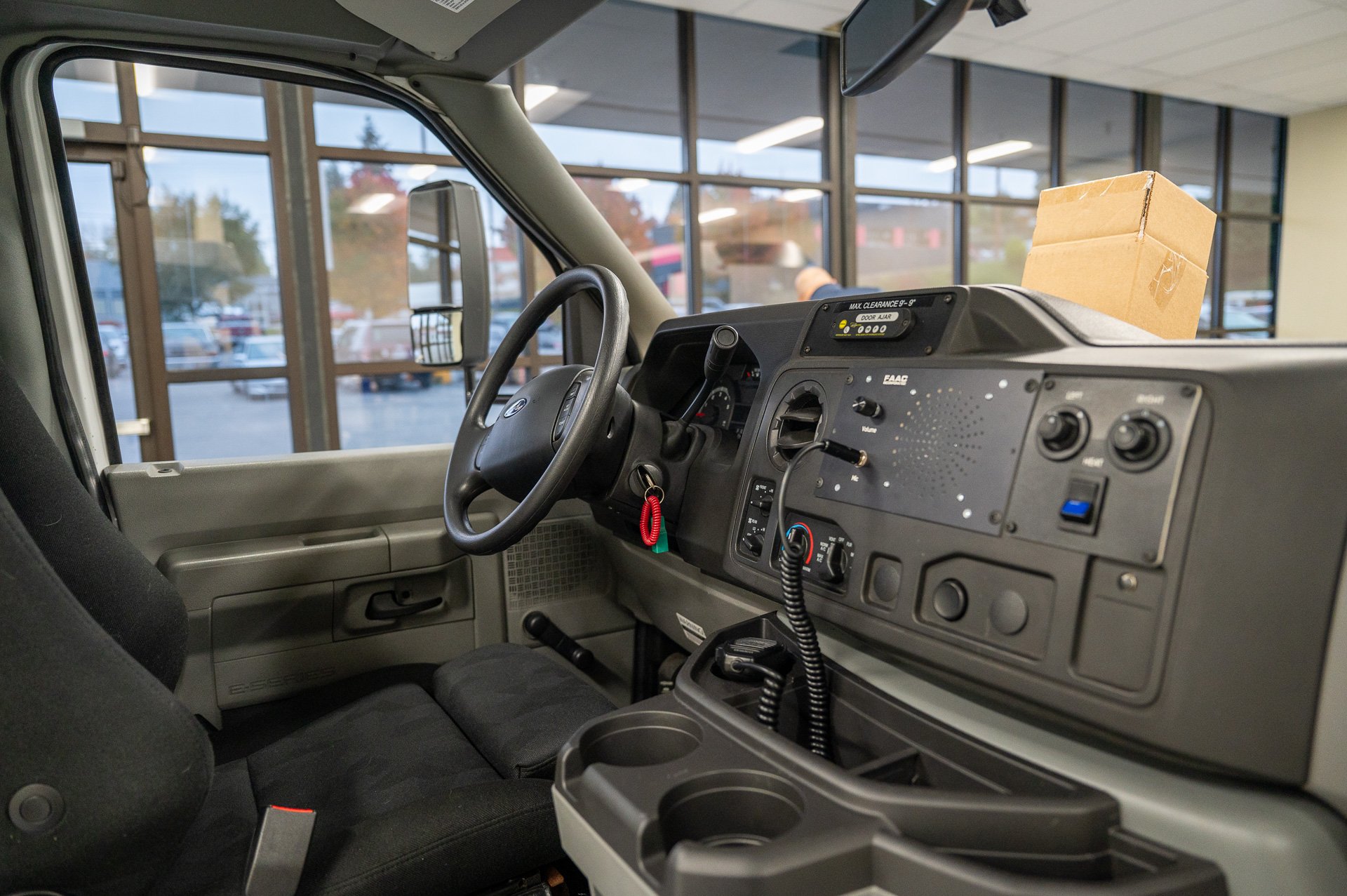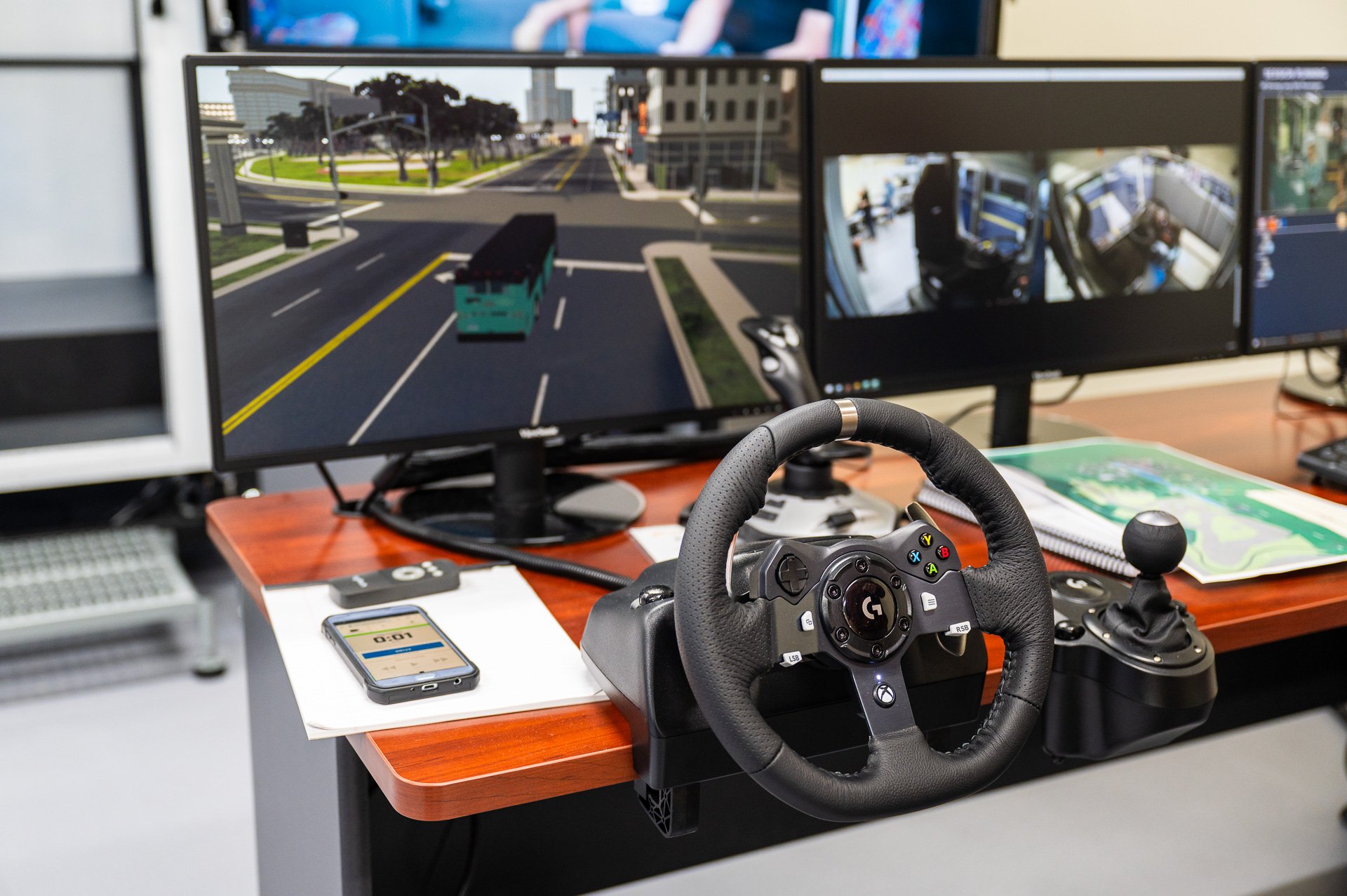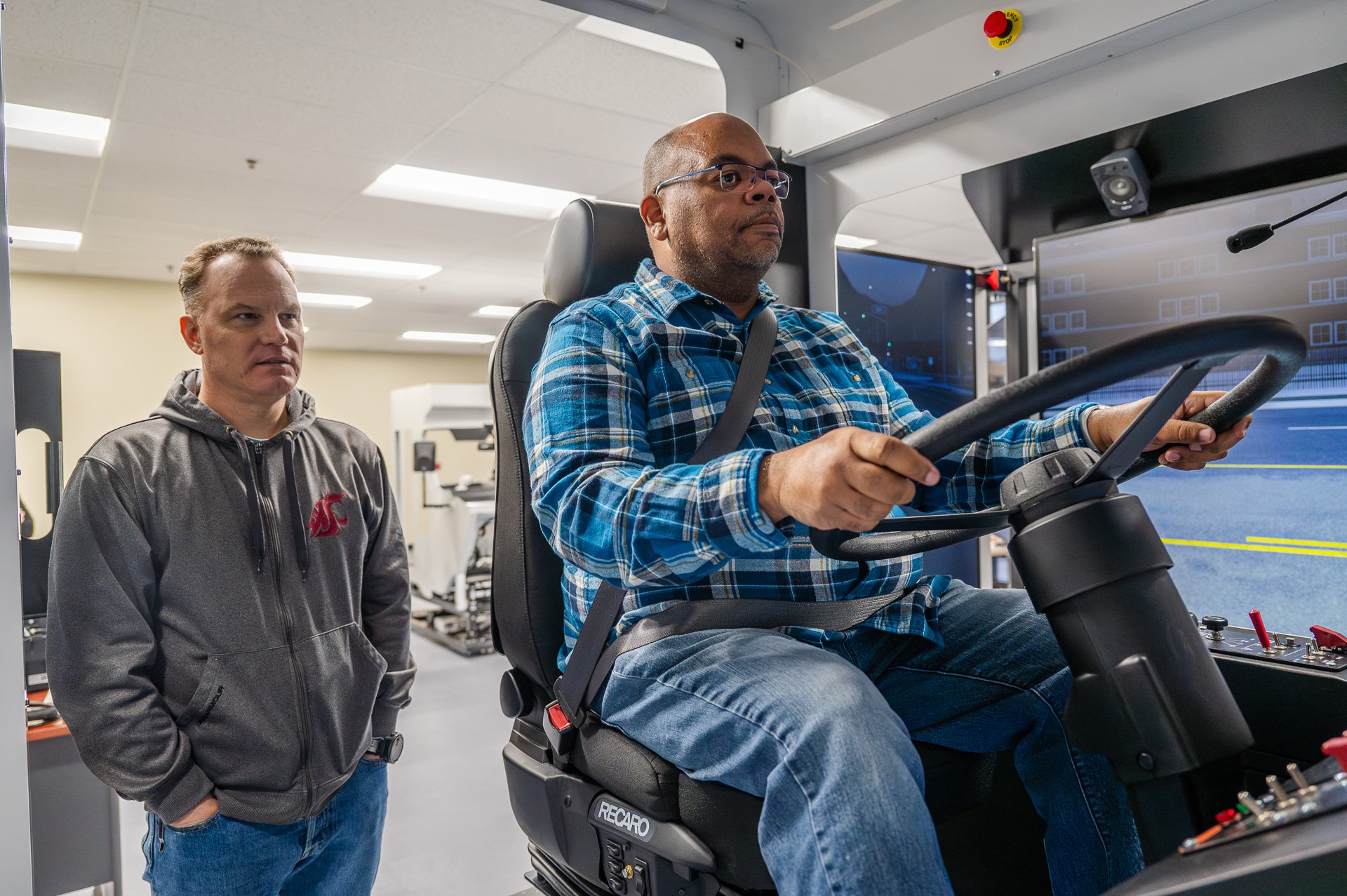New bus simulator will help KT operator trainees in and out of the classroom
Stopped at a stoplight in the middle of a dark street, Kitsap Transit Operator Trainer Mike Adams calmly presses down the gas pedal and runs his 40-foot Gillig bus into the back of the small white car in front of him, pushing it violently into the intersection.
If this were a real bus, on a real street, the accident would be a costly and potentially life-altering mistake. But it’s not.
Adams is behind the “wheel” of a new virtual bus simulator, a tool that Kitsap Transit plans to use to help train new operators. Step one: crashing the bus on purpose.
“(Trainees) can make mistakes in this environment; it doesn't cost them anything,” said Libby Kuehl, Kitsap Transit’s training specialist.
The simulator – designed and built by FAAC Commercial – was delivered to Kitsap Transit in early November. It comes with two “cabs,” designed for both Routed and ACCESS vehicles, plus a suite of pre-programmed scenarios set in “Safety City.” It’s intended to bridge a gap in Kitsap Transit’s current training program.
Right now, new operator trainees receive several weeks of in-classroom training – watching videos and learning the basic concepts of driving Routed or ACCESS buses. Trainees get their first crack at driving a bus on a closed course with a driver mentor. While there are no obstacles except traffic cones to hit on the closed course, driving a bus for the first time can still be nerve-wracking. The goal of the simulator is to offer new operators a fully immersive experience of driving what looks and feels like a real bus, but in a safe environment.
“When they're done with the classroom, we've introduced them to driving concepts, but they have no idea how to drive a bus,” Adams said. “This is a completely safe environment, but it is very realistic for them to be able to get comfortable and ease into understanding those concepts.”
The simulators, for both Routed and ACCESS, mirror the inside of Kitsap Transit’s coaches – the cab used to simulate an ACCESS bus was even created from a former Kitsap Transit cutaway vehicle. Students sitting in the cab are surrounded by video screens that simulate the outside world, including vehicle traffic, pedestrians, street intersections and buildings. Behind them is a video screen that can show passengers and run scenarios that call on the operator trainee to take action and test their customer service and emergency-response skills. Hydraulic platforms bounce, shift and turn to mimic a vehicle in motion.
“If you're going over a speed bump, you'd feel the bump. If you hit a curb, you'll feel the curb,” Kitsap Transit Safety and Security Trainer Irv Stahlnecker said.
During training, an operator trainer will be coaching the student through scenarios via headset. Students who aren’t driving can watch what the driver is seeing and doing via a screen.
A library of scenarios is available out of the box, but the system can also be tailored to practice specific skills. If a driver isn’t comfortable making right-hand turns, for example, they can use the simulator to practice their turning technique on repeat. Weather, time of day, bus type, emergencies, traffic and environmental hazards are all configurable.
“You can go make right-hand turns or pull in and out of stops all day long,” Safety and Security Trainer Robert Kleinpaste said.
Stahlnecker, Adams and Kleinpaste are former bus operators, and they all have high praise for the system’s realism.
“I think the key to the realism is there’s not really a delay. The technology is so good that there's really not a significant amount of delay, so it is very close to real,” Stahlnecker said.
Uses extend beyond training new drivers. Operators who get into accidents and require remedial training or veterans who want to brush up on their skills will also be able to use the simulator. After a scenario is complete, trainees can watch a review of their performance.
Kitsap Transit’s training team has a goal of reducing preventable accidents by 20 percent in 2024, and the simulator will play a big role in meeting that goal.
“We will have the opportunity to get (trainees) driving in a simulated environment where there's no risk of loss to life, limb, property, Kitsap Transit vehicles, any of that,” Kuehl said.
Kitsap Transit trainers are still being trained in the program, but they hope to be able to use it with new classes of operators beginning early next year. The simulator won’t replace real hands-on driving experience, but it will help transition trainees from the classroom to the road.
“It’s much more immersive than just having them in the classroom and showing videos,” Kuehl said.

